- Time 1: GMT 1am / SGT 9am / AEST 11am / NZST 1pm
- Time 2: GMT 10am / BST 11am / CEST 12pm / CAT 12pm / GST 2pm / IST 3:30pm | Duration : 60 min
The webinar presents the Finite Element Analysis of the Southern portion of the Olifantspoort Dam. The dam comprises an Off-channel Storage Facility to be constructed near the Olifanstpoort water abstraction works on the Olifants River in Polokwane, South Africa.
The dam has been designed as a ring structure incorporating five enclosure walls to enclose a valley to the west of the abstraction weir. The southern portion of the dam structure is the highest of the ring components and it comprises a 22 m high Rubble Masonry Concrete (RMC) multiple-arch buttress dam with a crest length of 230 m.
The southern portion is made up of arches with varying radius size. The varying arch sizes were implemented to account for changing foundation conditions under the dam footprint. The buttress portion of the dam transfers most of the load to the foundation, so it was deemed suitable to found the buttresses on the most competent portions of the foundation footprint. To achieve this a customized span and radius size was adopted for arches between buttresses placed accordingly.
The arch and buttress components of the dam configuration were initially designed and analysed for sliding and overturning stability assuming rigid body motion of the dam. Cylindrical arch and elementary beam theory were assumed to determine the required thickness of the arches and buttresses.
These assumptions do not consider the flexibility of the structure resulting in rib-shortening and other geometrical changes from deflection of the structure under loading.
Rigid body motion assumptions do not consider the flexibility of the structure resulting in rib-shortening and other geometrical changes from deflection of the structure under loading. The FE analysis performed in Midas FEA NX duly models the flexible elastic behaviour not addressed in a rigid body motion analysis.
-
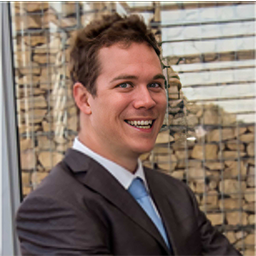 Guest Speaker
Ryan Cassells Structural dams engineer
Guest Speaker
Ryan Cassells Structural dams engineer
ARQ Consulting Engineers 7 years of experience in dam design and analysis using FEM
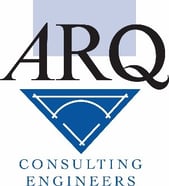
ARQ Consulting Engineers / South Africa
ARQ is an award-winning consulting engineering firm specialising in dams and geotechecnical engineering. ARQ was established at the beginning of 1993 on the platform of the specialist capabilities of its founders in bridge, dam, and geotechnical engineering. Over the years, the company has consolidated a local and international reputation as a leading dam and hydropower engineering consultancy.
ARQ has been active in dam engineering since 1993. ARQ has been involved in over 150 projects involving dams, hydropower, and river engineering in 33 countries; with 43 new dams completed or currently under construction (the highest being 275 m), 14 completed projects involving major rehabilitation or raising, 25 projects at pre-feasibility and feasibility level (highest dam of 275 m) as well as dam safety/asset evaluation studies. ARQ has furthermore contributed staff as specialists on local and international projects as members of expert panels and/or reviewers, and have undertaken various hydropower projects.
ARQ has worked on all dam types, including Roller Compacted Concrete(RCC), Rubble Masonry Concrete (RMC), hardfill, concrete (arch and gravity types), Concrete Faced Rockfill Dam (CFRD), earthfill, rockfill, and composite dams. Our teams have worked across most continents and are well versed in international best practice, routinely applying state-of-the-art technology and systems to support a more efficient project process.
Website: https://arq.co.za
E-mail: ryan@arq.co.za
- Ryan professional profile
- ARQ Location
- Company background and dam legacy
- RMC multiple-arch buttress dam, near Polokwane, South Africa
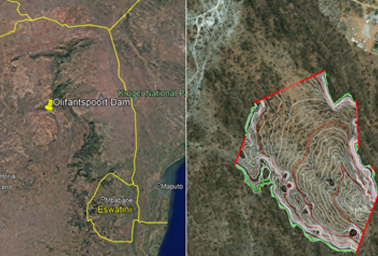
- Foundation conditions
- Dam type choice based on foundation conditions and material availability
- Adoption of a RMC multiple-arch buttress Dam with different arch configurations according to lineation in foundation
- Selection of RMC material
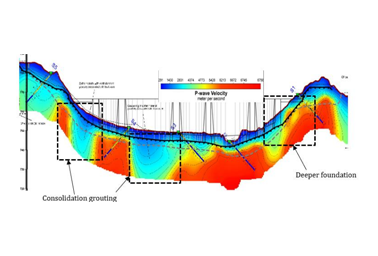
- 3D solid geometry of Dam (arches, buttresses and foundation)
- Dam body loaded to account for various loading combinations including pseudo-static seismic and thermal temperature drop
- RMC design strength criteria
- Develop and implement suitable meshing strategy for dam and foundation using 3D solid elements
- Interface elements at the joints between dam and foundation with non-linear stiffness
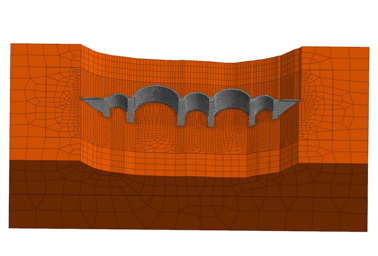
- Verify analysis results by checking sum of forces against a hand calculation
- Evaluate displacement results of dam for suitability
- Extract plots of arching and vertical stresses to understand load transfer
- Extract plots of P3 stress vectors to review efficiency of load transfer of in dam body
- Probe vertical stress contours on underside of dam
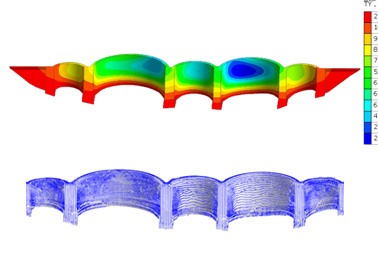
Thank you for your interest.
Thanks for registration.
The registration confirmation email has been sent to your email
Thanks for registration.
Please check the confirmation email from GoToWebinar for joining the session.
a. Information Processed
The minimum amount of personal information required for the provision of the service is being collected. In the process of the sign-up for membership or the use of the service, the Company is collecting the minimum amount of personal information required to provide the service through a separate application or program as follows:
Processing Personal Information- [To sign up for membership and use the service]
- Required: email, ID, password, name, mobile number, country, company name, position, service use history
- [To verify one's identity]
- Name, email, mobile number, encrypted user verification value (CI), duplicate information (DI)
- [To send inquiries and use Customer Center]
- Required: name, company name, country, mobile number, company email, department, position, contents of inquiries
b. Method of Collection
When collecting the personal information, the Company makes sure to inform the user in advance and request for the user’s approval. The personal information is being collected in the following ways:
- When the user consents to the collection of his/her personal information and directly fills in such information in the process of signing up for membership and using the service
- When the personal information is provided through partnership services or from other entities;
- When the information such as web page, email, fax and telephone number is collected in the course of counseling through customer center; and
- When participating in events on/offline.
The personal information to be collected from the user in using the service is as follows:
- • Data including device information in the process of using PC web, mobile web/application (OS, screen size, device ID, mobile phone model, device model), IP address, cookie, access time, history of unjust usage, service use history may be automated created and collected
The Company uses the personal information for the following purposes including managing membership, providing and improving customized services, calculating fees incurred for the services, developing new services, and providing information for service-related events and promotion; provided, however, that the Company shall not use the member’s personal information if the member has expressed his/her intention that he/she does not want to provide the information for service-related events and promotion. The Company shall not be held liable for any disadvantage that may arise to the member as a result thereof.
- To identify the member and confirm his/her intention to join the membership; to check the member’s identification and age; and to prevent unjust usage
- To develop new services and provide multiple services; to handle inquiries and complaints; and to deliver notification
- To send and deliver contents and invoices for paid services
- To calculate and collect fees for paid services
- To prevent and restrict any act that may disrupt smooth operation of the service (including account stealing and unjust usage)
- To suggest customized contents based on demographic characteristic, the user’s interest, preference and tendency and to utilize them in marketing activities
- To provide voice recognition and one-to-one services
- To compile statistics on service use history and access frequency; and to establish service environment in terms of privacy protection and use it to improve service qualities.
- To introduce the Company’s existing and new services (products) by utilizing email information for the members who have consented to the use of events and promotional information when signing up for membership; and to deliver related events and promotional information and provide opportunities to participate
The personal information shall be destroyed upon achievement of the purposes of collecting and using it, and the procedures and methods for destruction is as follows.
The personal information stored in the form of an electronic file will be deleted so that such information shall not be restored and reproduced. Other records, print-outs, written documents will be shredded and incinerated; provided, however, that the data that will be stored for a certain period of time in accordance with internal policy are as follows:
| Records to be Retained | Grounds of Retention | Period of Retention |
|---|---|---|
| Records on agreement and withdrawal | Act on the Consumer Protection in | 5 years |
| Records on payment and product supplies, etc. | Electronic Commerce, etc. | 5 years |
| Records on consumer complaints or dispute handling | 3 years | |
| Records on marks/advertisement | 6 months | |
| Books and evidential documents on all transactions as specified in tax law | Framework Act on National Taxes | 5 years |
| Books and evidential documents on all transactions as specified in tax law | Framework Act on National Taxes | 5 years |
| Records on electronic financial transactions | Electronic Financial Transactions Act | 5 years |
| Records on log-in history in connection with the use of the service | Protection of Communications Secrets Act | 3 months |
-
01 Free License of GeoXD
It is available to all engineers who have applied for the online training course
_GeoXD%20Webinar/benefits_geoxd(352,256).png)
-
02 Free Trial of GTS NX
A free trial of 15 days is provided (you can check it on the website). Downloaders will receive invitations to the future online webinars or case study series.
_GeoXD%20Webinar/benefits_gtsnx(352,256).png)
-
Step 1
Register
Register for the webinar by clicking on the link in the email invite. You'll receive a confirmation email with a unique link to join the session. Click "Add to calendar" to ensure you don't miss the webinar.
-
Step 2
Join
At the time of the webinar, click the join link in the confirmation email or your calendar invite. Alernatively enter the 9-digit code into the box above. You can join from any Mac or Windows computer to join with our iOS or Android mobile apps.
-
Step 3
Watch & Learn
If you arrive before the organizer, you'll see a window confirming that you successfully connected. Once the organizer arrives the Webinar will begin.
Sign up for MIDAS news and updates
- Solutions
- Resource
- Company
- GeoXD
- Blog
- About
- GTS NX
- Events
- Partnership
- Get Started
- Technical Support
- Contact